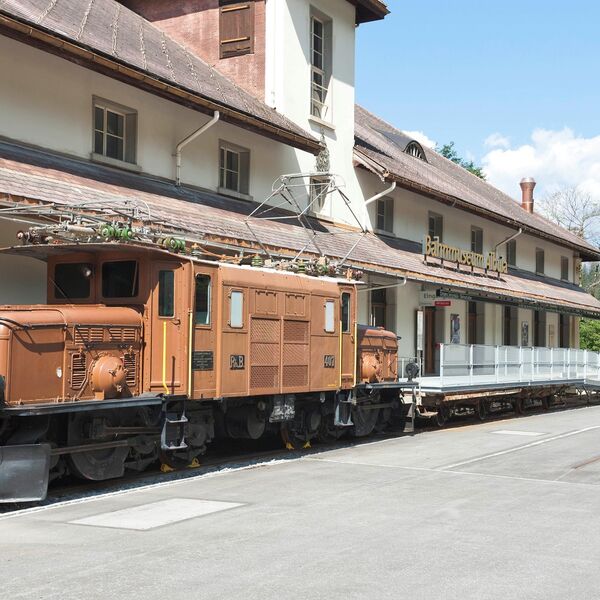Rhätische Bahn in der Landschaft Albula/Bernina
Ein bahntechnisches Meisterwerk
Von Thusis aus klettert die RhB durch Kehrtunnels und über Viadukte das Albulatal hoch in Richtung St. Moritz. Die harmonisch in die Landschaft eingebettete Linie ist ein Paradestück aus der Zeit der Bahnpioniere.
Die Berninalinie zwischen St. Moritz, Valposchiavo und Tirano verbindet den Norden und den Süden Europas. Sie führt vorbei an Bergen, Seen und Gletschern hinunter zu den Palmen im Veltlin.
Albulalinie
Noch heute gilt die 62 Kilometer lange Albulalinie als Meisterleistung in Sachen Bahntechnik und Linienführung. 1903 eröffnete die RhB die spektakuläre Strecke zwischen Thusis und St. Moritz nach nur fünf Jahren Bauzeit. Die rote Bahn klettert dabei über 1 000 Höhenmeter hoch – dank Solisviadukt, Landwasserviadukt oder den Kehrtunnels zwischen Bergün und Preda ohne Zahnrad.
Abseits der Schienen wandern Sie durch die intakte Bergwelt im Naturpark Ela, auf dem Bahnerlebnisweg Albula oder besuchen das Bahnmuseum Albula in Bergün. Im Winter kurven Sie auf der Schlittelpiste von Preda nach Bergün.
Berninalinie
Vom mondänen St. Moritz führt die Berninalinie hinauf auf das Dach der RhB, das Ospizio Bernina auf 2 253 Meter über Meer. Bis zu 70 Promille Steigung meistert der Zug mit Leichtigkeit. Die Sicht auf den Morteratschgletscher und die weltberühmte Montebellokurve zeigen mustergültig, dass die Bahnpioniere bei der Linienführung auch an die Touristen dachten. Der Zug fährt weiter entlang dem Lago Bianco und Laj Neir bis zur Alp Grüm, dem einzigen Restaurant mit Nur-Bahn-Anschluss.
Im Zick-Zack-Kurs geht es danach talwärts in Richtung Valposchiavo. Im pittoresken Dorf Poschiavo lohnt sich ein Zwischenhalt: Das «Spaniolenviertel» lockt mit prächtigen Palazzi und einem charmanten Dorfkern. Eine Zusatzrunde drehen Sie auf einem der bekanntesten Zeugen der Pionierleistungen: dem Kreisviadukt bei Brusio. In Tirano treffen Sie auf Palmen und südländisches Flair.








